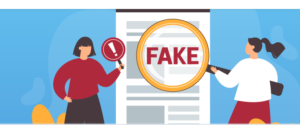In today’s world, where the internet is one of the primary information sources, learners must understand how to participate and navigate the networked world. The NCTE framework has outlined elements to guide how teachers plan, model, support, and assess student learning in a digital age.
The article ‘Developing critical literacies: What we need to know in a “fake news” world’, reminds me of how easy it was to discern between what was fake and what was real in the local magazines and newspapers I came across growing up. In today’s age, the reverse happens to be the case as it has become difficult to examine the credibility of the information and sources we consume from the internet due to the sophistication of today’s fake news. This article suggests ways to deal with today’s fake news. An example could be using the Media Bias Chart to understand and identify biases.

The TedED Video “How to choose your news” also provides a guide on differentiating between facts and non-facts in the news we receive. checking for the latest pieces of information at several points in a day, rather than every few minutes allowing time for complete details to emerge is one aspect I have to work on personally.
Teaching digital literacy in the elementary classroom can provide significant benefits to students. The younger a child begins to feel comfortable using digital tools, the more successful they are likely to be in the future. As a future elementary educator, it is important to educate students on ways to examine the credibility of the information they receive online. A good way to start will be to ensure that the students understand key concepts to stay safe online, by teaching them several key digital literacy skills. The EdCan Fact Sheet also outlines strategies and ideas that are beneficial in helping students examine the credibility of the information they receive from the internet.

In my search for ways to successfully teach digital literacy to elementary students, I stumbled on the article “5 Activities to Teach Your Students How to Spot Fake News”.
